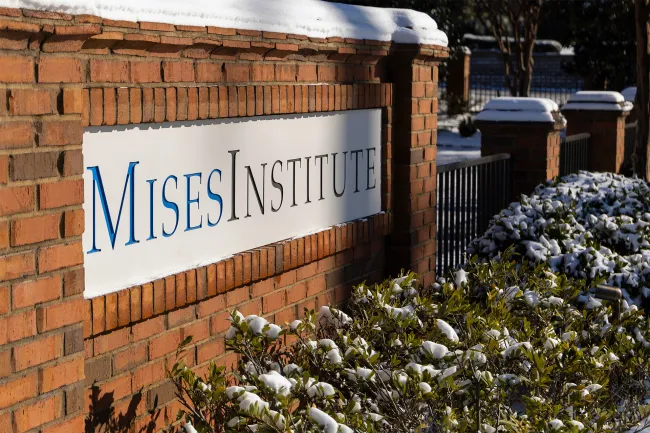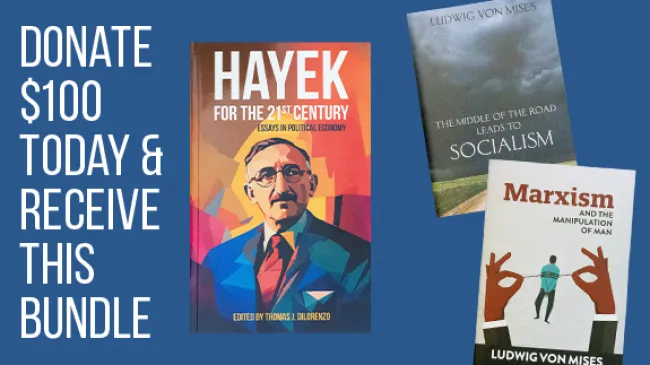Say’s Law of Markets advances the self-evident truth that supply and demand are two sides of the same coin, meaning one can view economic output as supply as well as demand. Demand is measured by what producers produce. Supply is measured by what producers produce.
In a state of nature, one’s own economic demand is dependent on and measured by one’s production. Survival requires people to work to that end. As civilization emerged, producers began trading with one another, exchanging something they had for something they wanted.
Some people looked upon this activity and decided they could get what they wanted without working for it. They saw a “free lunch” available for the taking. Thomas Paine described them as “restless gangs” that “overawed the quiet and defenseless to purchase their safety by frequent contributions.” Though he was speculating about how the “race of kings” originated, his characterization applies to any society ruled by force.
Under coercive rule, which characterizes today’s states, every producer is subject to having a portion of his output confiscated for support of the ruling class. Though rulers usually assure its denizens the confiscation is necessary for their benefit, the fact that it’s coercive means people have no choice in the matter. Unlike markets, in which people trade as equals, states established a system of obedience to a ruling elite to get what it wanted. To hide the nature of the relationship, the restless gangs adopted civilized-sounding names such as “contributions” and “government.”
Calling the bounty government receives “free” is somewhat misleading, since the criminality requires sustained, often convoluted, effort in the form of propaganda, bureaucracies, police, and close relationships with major economic actors, as President Trump is doing. Regardless of what might flow from government to its citizens, the arrangement is such that government’s revenue stream will only stop if it kills the golden goose.
Over time, economies adopted money to facilitate exchanges—and that’s where theft reached sophisticated lows.
Money is the most marketable commodity, and commodities can be made to deceive. When money originated from the market, people gradually traded in coins of precious metals. A one-ounce silver coin might look the same as others, but if the mint diluted it with base metals it would be reflected in its weight. The emperor Nero began the gross debasement of the Roman denarius in this manner. Coins minted before the fraud were usually hoarded in accordance with Gresham’s Law (“bad money drives out good”).
Notice, however, in a free market—without Caesar’s decree—good money drives out bad, and the Law as stated is wrong. As Gary North points out, “The free market rewards producers of customer-satisfying products and services. The definition of bad money is money that the free market refuses to use.” But government’s coercive nature violates free markets. Caesar was getting something for nothing through a subtle form of theft backed by the threat of death. Again, the loot stolen took significant effort on the part of the thieves and diminishes the accusation that it was a “free lunch.”
Today’s Thieves
Caesar’s idea has matured into the suit-wearing leaders of today. Currency debasement is no longer regarded as fraud, but as smart money management. Banks as money warehouses or savings institutions have long practiced fractional reserve banking as if it were ethical business conduct. Embezzlement? Hardly. When banks couldn’t meet the demands of a bank run, government often allowed them to stay in business without redeeming their depositors’ gold or silver coins. If people hadn’t been stampeded into doubting their bank’s solvency, one argument goes, there would be no crisis.
For most people today the idea of paper money as receipts for market-valuable coins is alien in the extreme. To government, that’s the way they want it. When FDR issued Executive Order 6102 on April 5, 1933, forbidding Americans from hoarding gold, the separation of money from its receipts began, and the receipts became money itself. Not that gold suddenly became worthless. Only the government could hoard it, which it did at Fort Knox, where coins were melted into bars. Since paper can be inflated at will, experts decided monetary inflation was needed to end the Great Depression.
Since at least 1755, when Richard Cantillon published An Essay on Economic Theory, it has been known that new money enters the economy at specific points, not everywhere at once. The ones receiving the new money first, such as government personnel, are able to spend it before prices rise. People who receive it later are stiffed with higher prices.
Thus, the Age of Inflation began with elites benefiting from the new money while the rest of the population remained oblivious as to why prices always rise, often blaming it on greedy capitalists with an insatiable lust for profits. To those getting money as it came off the presses, this became government’s Holy Grail, the “free lunch” it had at last found.
It was Keynes’s General Theory of Employment, Interest, and Money, published in 1936, that provided the intellectual cover for government’s mandate for inflation. Perhaps more than Keynes himself, it was his many influential disciples such as textbook king Paul A. Samuelson, Alvin H. Hansen of Harvard, and Keynes’ biographer R. F. Harrod that elevated his book to near-religious status. Keynes’s straw statement of Say’s Law—supply automatically creates demand sufficient for full employment—was seen by policymakers as a flawed idea in an era of high unemployment. It was time to discard Say so unemployment could be remedied by increasing demand, specifically government spending fueled by the printing press. If people were out of work, have them dig holes and pay them with money they couldn’t redeem.
In Say’s formulation, as noted at the beginning, supply and demand denoted the same thing—production. Production was the foundation of both supply and demand. Government, armed with fiat money, could bypass production and essentially claim the output of others. Some might call it a free lunch, others call it theft.


